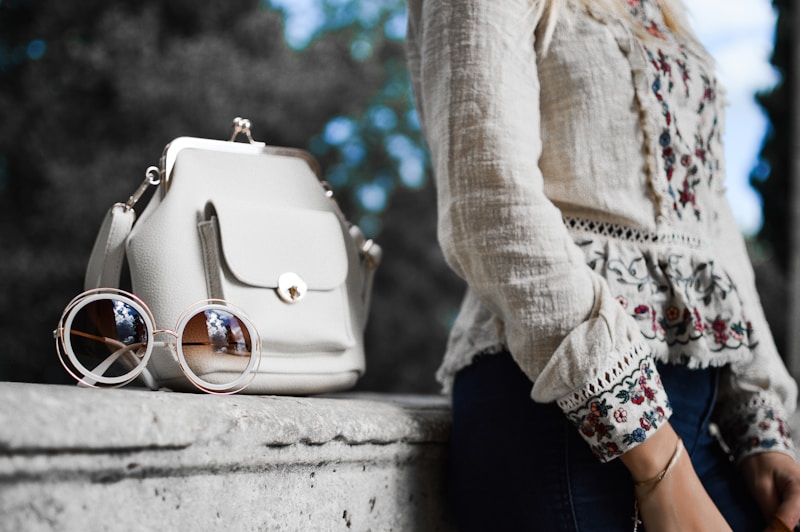Embellishments and Fabric Types: Finding the Perfect Balance for Your Fashion Needs
Introduction to Embellishments and Fabrics
When it comes to fashion design, the interplay between embellishments and fabric types is fundamental in achieving the perfect garment. Understanding how various fabrics complement or clash with different embellishments is essential for designers and hobbyists alike. This article explores the different types of fabrics and embellishments, offering guidance on how to achieve that perfect balance.
Understanding Fabric Types
Fabrics come in many types, each with its unique characteristics that influence the design and functionality of a garment. Here are some of the most common fabric types:
| Fabric Type | Characteristics | Common Uses |
| Cotton | Breathable, soft, and versatile | T-shirts, dresses, and casual wear |
| Silk | Luxurious, smooth, and elegant | Evening gowns, blouses, and scarves |
| Polyester | Durable, resistant to wrinkles and shrinking | Activewear, dresses, and home textiles |
| Wool | Warm, elastic, and moisture-wicking | Coats, sweaters, and suits |
| Linen | Lightweight, breathable, and textured | Summer wear, suits, and tablecloths |
Exploring Embellishments
Embellishments enhance the visual appeal of garments and include elements such as beads, sequins, embroidery, lace, and appliqué. But choosing the right embellishments requires an understanding of how they interact with different fabrics.
Types of Embellishments
Here's a breakdown of some popular embellishments:
- Beads: Adds texture and shine, popular on evening wear.
- Sequins: Great for creating glamorous looks, perfect for dresses.
- Embroidery: Offers intricate designs adds depth and detail.
- Lace: Excellent for feminine touches and layering.
- Appliqué: Creates unique patterns and styles, often used in casual or children's wear.
Finding the Perfect Balance
Achieving the perfect balance between embellishments and fabric types requires careful consideration. Here are some tips to keep in mind:
Consider the Weight of the Fabric
Heavy embellishments like sequins should be matched with heavier fabrics such as cotton blends or silk. Using sequins on lightweight fabrics like chiffon might result in an overwhelming look.
Think About the Occasion
The occasion dictates the type of embellishments and fabrics you opt for. For formal events, fabrics like silk with delicate embroidery are ideal. Casual settings might benefit from cotton with playful appliqués.
Texture Matters
Combining textures can make your design stand out. For example, combining a smooth silk fabric with a rough lace embellishment can create an engaging visual contrast.
Color Coordination
Always consider the color palette. Bright embellishments may work brilliantly on neutral fabrics but can clash with other bold colors. Opt for colors that complement each other, enhancing your design rather than detracting from it.

Common Questions About Embellishments and Fabrics
As you dive deeper into the world of embellishments and fabrics, you may find yourself asking the following questions:
- What fabrics hold embellishments best?
- Can I mix different types of embellishments?
- How do I care for embellished garments?
- What are the best fabrics for winter wear?
- Are there specific embellishments that are best for children’s clothing?
Embellishments and Sustainability
As sustainability becomes a priority in fashion, selecting embellishments and fabrics that are eco-friendly has gained attention. Designers now have access to recycled fabrics and biodegradable embellishments, allowing for the creation of beautiful garments without harming the planet.
Choosing Eco-Friendly Fabrics
Consider fabrics like organic cotton, Tencel, and hemp. These materials offer sustainability without compromising on style. When selecting embellishments, look for options made from recycled materials or natural fibers.
Final Thoughts
In conclusion, finding the perfect balance between embellishments and fabric types plays a crucial role in fashion design. Keep in mind the occasions for which you are designing, the weight and texture of fabrics, and the types of embellishments that will enhance your garment. By following these tips and continually exploring new techniques, you can master the craft of combining fabrics and embellishments effectively, creating stunning and functional pieces. Always remember to check the sustainability of your materials as this will not only benefit the environment but also resonate with environmentally conscious consumers.
As you continue your journey in fashion design, let experimentation guide you. Don’t be afraid to try out different combinations of fabrics and embellishments, as this is often where the most unique and eye-catching creations emerge!